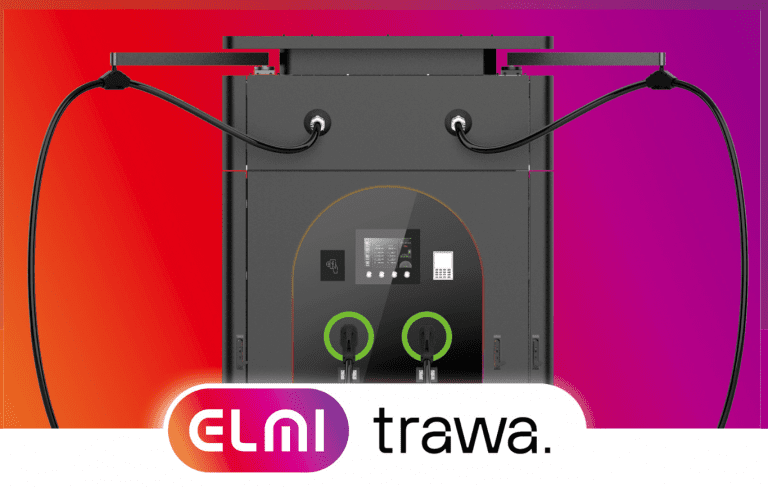Address
Marie-Curie-Straße 2
61194 Niddatal
Germany
Opening Hours
Mon - Fri:
10:00 AM - 4:00 PM
Saturday: By appointment
With integrated battery storage systems for
profi table charging stations -
How intelligent systems reduce operating costs
and secure additional revenue
The expansion of charging infrastructure for electric vehicles is a strategic decision for many companies – but also an economic challenge.
High connected loads, expensive grid connections and unfl exible electricity prices often make the operation of charging stations cost-intensive. An innovative solution is now coming from providers that rely on battery-based charging stations – such as ELMI Power in collaboration with the energy supplier trawa.
The key: battery storage integrated into the charging station
The principle is simple but effective: charging stations with integrated battery storage do not require expensive grid expansion. Instead, the battery buffers peak loads and ensures that a simple, often already existing grid connection is sufficient. This not only lowers installation costs, but also permanently reduces ongoing grid charges. But that’s not all – the real leverage lies in intelligent energy management.

Buy cheaply, sell profitably
With the increasing share of renewable energies, the electricity market is becoming more volatile – and this is precisely where the opportunity lies: intelligent electricity price trading allows electricity to be purchased when it is cheap (e.g. when PV feed-in is high) and stored temporarily. In phases of high prices, the stored energy can either be used to supply the charging points or actively sold on the electricity market. This is where providers such as trawa come into play: as a digital energy supplier with a focus on 100% renewable energy, trawa not only supplies the electricity, but also actively manages the storage capacities. In combination with the hardware from ELMI, this creates new sources of revenue – without any additional expense for the operator.
Measuring devices monitor the current flows and enable precise control at the grid connection. In this way, the use of the battery can be optimally divided between charging operation, grid buffering and electricity market marketing.
Practical example of smart energy integration
The combination of ELMI and trawa solutions impressively demonstrates how technological integration paves the way to an intelligent, sustainable energy system. By remotely controlling the storage systems, trawa can dynamically trade unused capacities and generate significant additional revenue for the operator – without any additional effort. What does it take? A combination of intelligent hardware, a compatible energy management system and an experienced partner in electricity market trading. The investment in a battery-supported charging solution not only pays for itself through savings on grid connection costs – it also opens up access to new, lucrative sources of income.
Excursus: How trading on the electricity market works
The quantities of electricity required to charge the battery are purchased on the day-ahead market. However, there is still plenty of time before the electricity is actually physically delivered on the following day – time in which electricity volumes already purchased can be resold on the intraday markets and new electricity volumes can also be purchased. If, for example, the electricity price for the planned delivery date rises, electricity volumes that have already been purchased can be sold again – without even one kWh of electricity physically flowing. The difference between the selling price and the purchase price of the electricity then results in the profit from the arbitrage transaction. The battery storage system is then charged at the new optimum time when the electricity price is now at its lowest. When trading on the electricity market, only unused capacities of the battery storage system are used, so that the charging of electric vehicles is not restricted at any time. With battery-supported charging stations in combination with intelligent control and energy market connections, companies can reduce operating costs and secure significant additional revenue.
